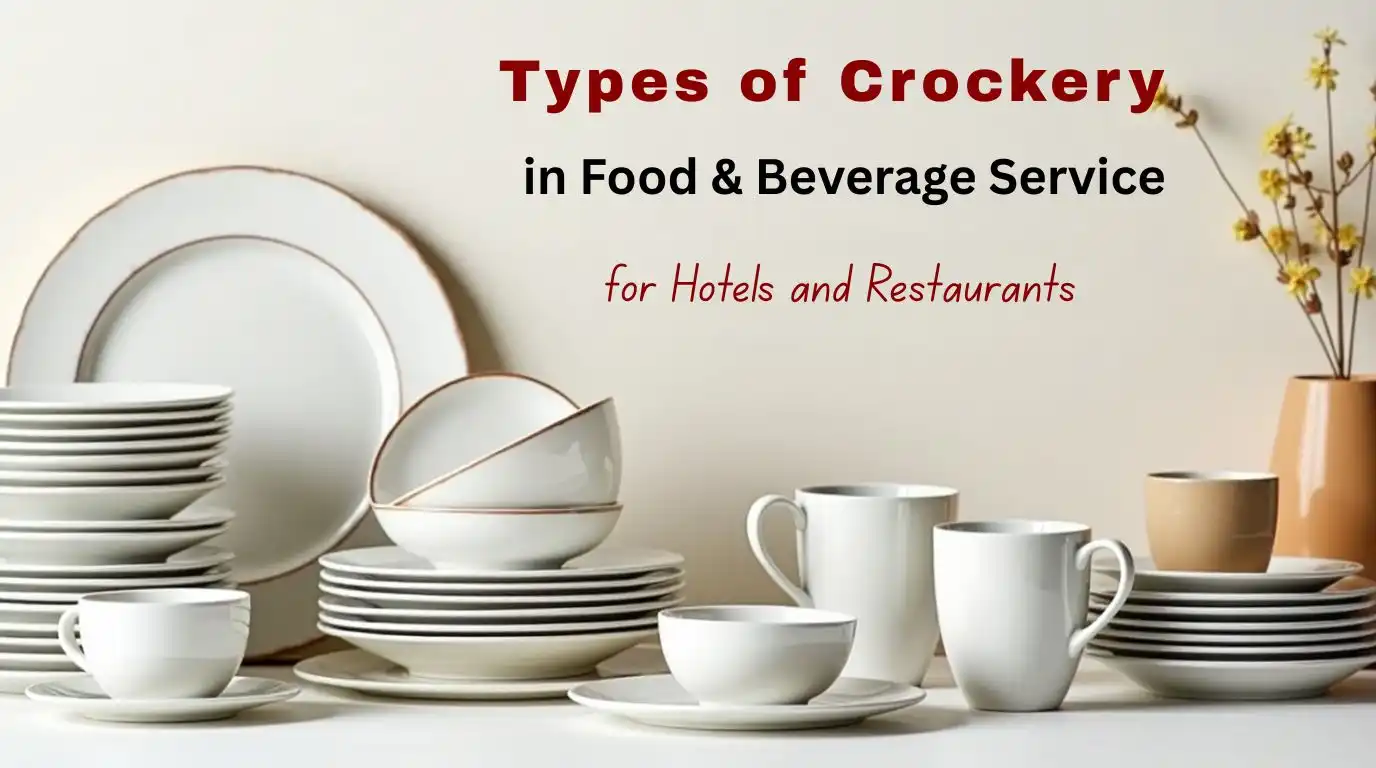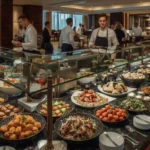Crockery plays a vital role in food and beverage service, both in hotels and restaurants. It is not just about serving food—it is about creating a complete dining experience. The type of plate, bowl, or cup used can influence how a dish looks, how guests feel, and even how they remember the restaurant.
A simple white plate can highlight the colours and textures of food, giving a modern and elegant touch. On the other hand, colourful or rustic crockery can create a casual, warm atmosphere that matches the restaurant’s style. Beyond appearance, crockery also adds to the sensory experience—the weight of a plate, the smoothness of its surface, or even the sound of cutlery against it all shape a guest’s impression.
For hotels and restaurants, crockery is more than tableware—it reflects their brand identity. A fine-dining restaurant may choose bone china or porcelain to signal elegance and luxury, while a casual eatery might prefer stoneware or earthenware for a homely, rustic feel. Choosing the right crockery not only enhances guest satisfaction but also supports the restaurant’s image and long-term success.
History in Brief
Crockery, a key part of food and beverage service equipment, has evolved from wooden boards and bread trenchers in medieval Europe to precious metals for the wealthy. The arrival of Chinese porcelain in the 15th century transformed dining worldwide, while Asia had perfected porcelain centuries earlier. In the 20th century, modern materials like melamine and glass made crockery durable, practical, and widely available for hotel and restaurant service.
For additional information on the evolution and types of tableware, see Tableware on Wikipedia.
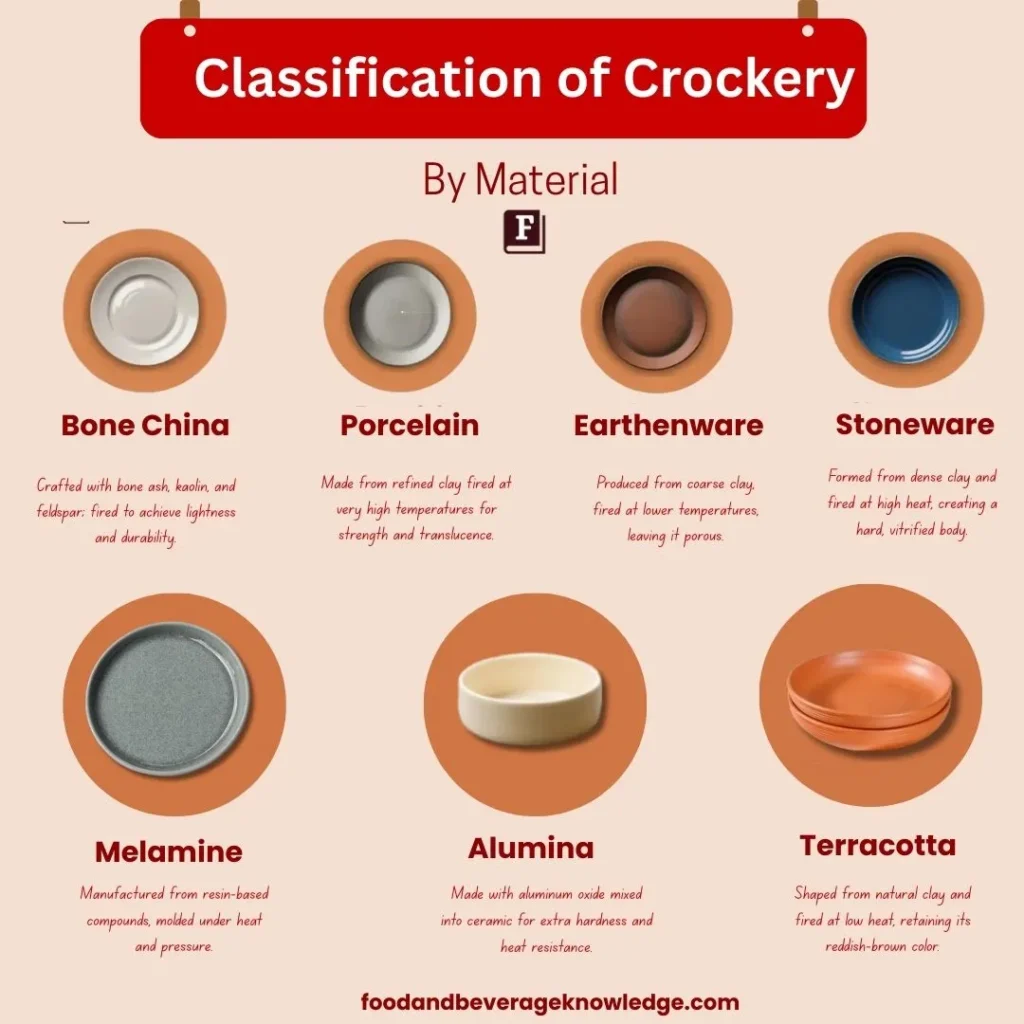
🎥 Watch the Video: Here’s a quick visual guide to the Types of Crockery in Food & Beverage Service.
It covers the same details as this post — perfect if you prefer learning through video!
Classification of Crockery by Material
Crockery can be classified according to the material it is made from. Each type of crockery has distinct properties that influence its durability, appearance, handling, and suitability for different styles of food and beverage service. For hotels, restaurants, and catering operations, understanding these materials is essential for creating the right dining experience, managing costs, and maintaining service standards.
Porcelain
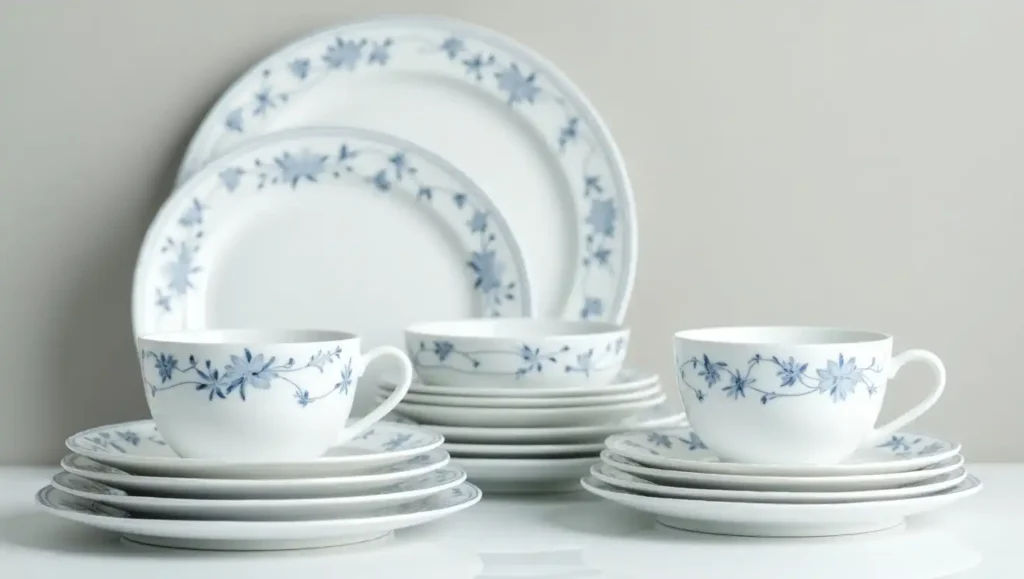
Porcelain is made from a refined blend of kaolin clay, feldspar, and quartz, fired at high temperatures of 1200–1400°C. This creates a dense, non-porous, and elegant material that is smooth, white, and slightly translucent when held to the light. Compared to earthenware, it is stronger and less porous, while feeling heavier and less delicate than bone china.
In hotels and restaurants, porcelain is commonly used for dinner plates, soup bowls, and formal table settings, offering a timeless and sophisticated look. It is generally dishwasher and oven-safe, but care should be taken to avoid sudden temperature changes that could cause cracks.
Bone China
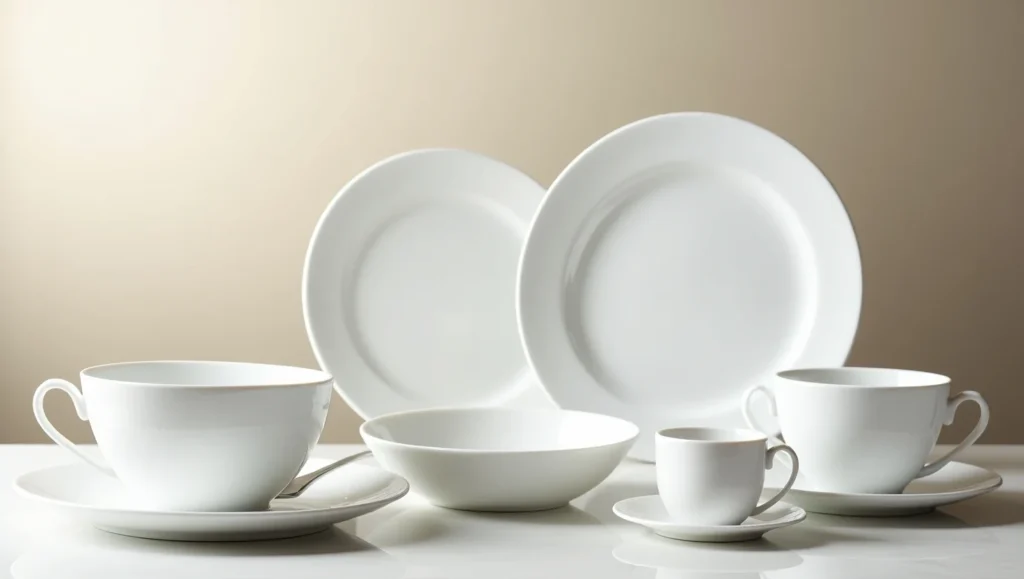
Bone china is a type of porcelain enriched with 30–50% bone ash, giving it exceptional strength while remaining lightweight. Fired at slightly lower temperatures than porcelain, it has an even whiter, smoother, and more translucent finish.
Widely regarded as the most refined form of dinnerware, bone china is a staple in five-star hotels and fine dining restaurants. It is perfect for premium plates, cups, and banquet service, offering elegance and sophistication. While durable, it requires gentle handling, and metallic-decorated pieces should not be used in microwaves.
Stoneware
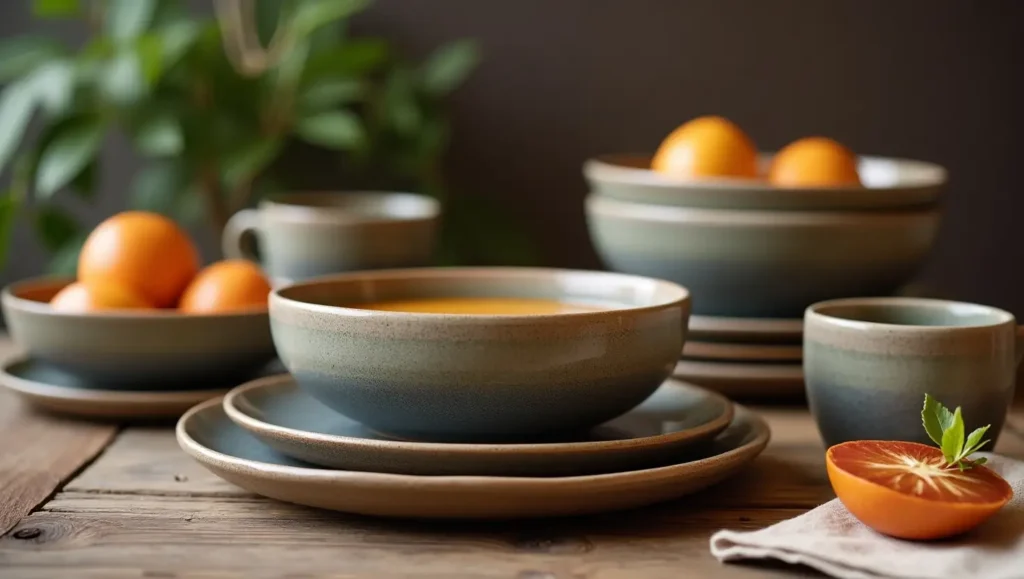
Stoneware is made from stoneware clay mixed with quartz and feldspar, fired at 1100–1300°C to create a heavy, opaque material with natural earthy tones. It has a rustic charm, less refined than porcelain or bone china but stronger than earthenware.
Popular in casual dining, cafés, and bistros, stoneware retains heat well, making it ideal for soups, casseroles, and pasta dishes. It is dishwasher, oven, and microwave safe, though its weight requires care during service.
Earthenware
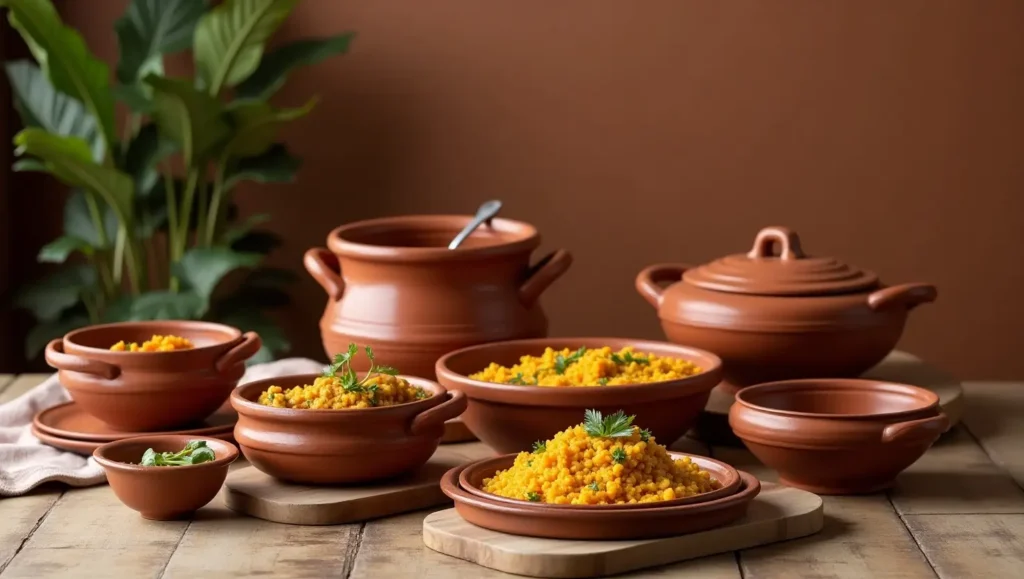
Earthenware is made from natural red or brown clay and fired at temperatures below 1200°C. It is porous unless glazed and more fragile than other ceramics, giving it a warm, rustic appeal.
Commonly used in theme-based or regional restaurants, earthenware is ideal for speciality dishes, curries, baked items, or decorative presentations. Terracotta, a coarse variant, is popular in Mediterranean, Mexican, and Indian cuisine. Due to its fragility, earthenware is better suited for speciality or decorative use rather than heavy commercial service.
Learn more about earthenware on Wikipedia.
Melamine
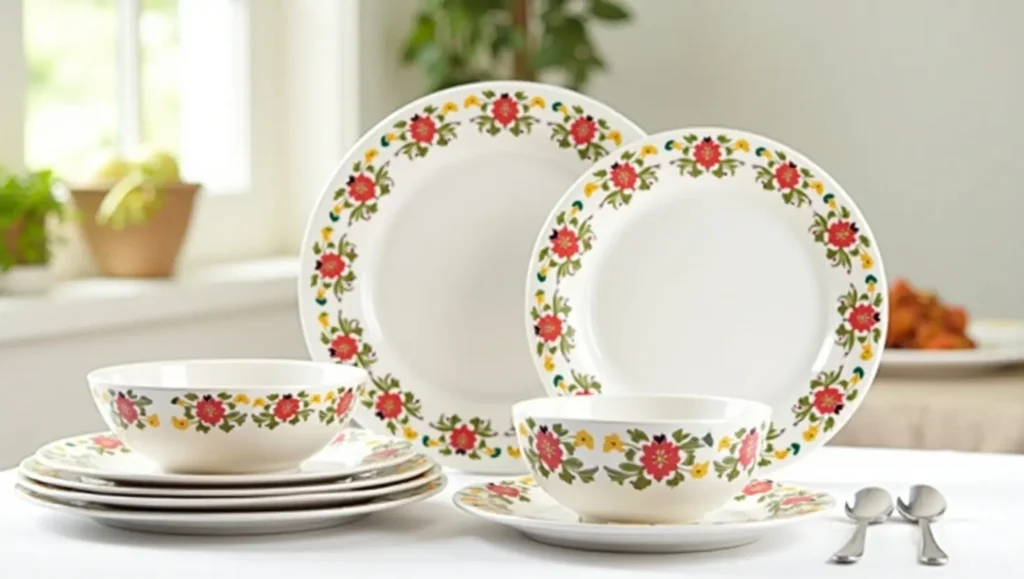
Melamine is a thermosetting plastic resin, not a ceramic, moulded under high heat and pressure. It is lightweight, durable, and nearly unbreakable, making it ideal for buffets, cafeterias, outdoor dining, and children’s meals.
While it can mimic the look of ceramic, melamine does not have the heat resistance of porcelain or stoneware. It is dishwasher safe but not suitable for ovens or microwaves, and may scratch or lose its finish over time, requiring periodic replacement in professional settings.
Learn more about melamine on Healthline, including its uses, safety considerations, and care tips.
Alumina
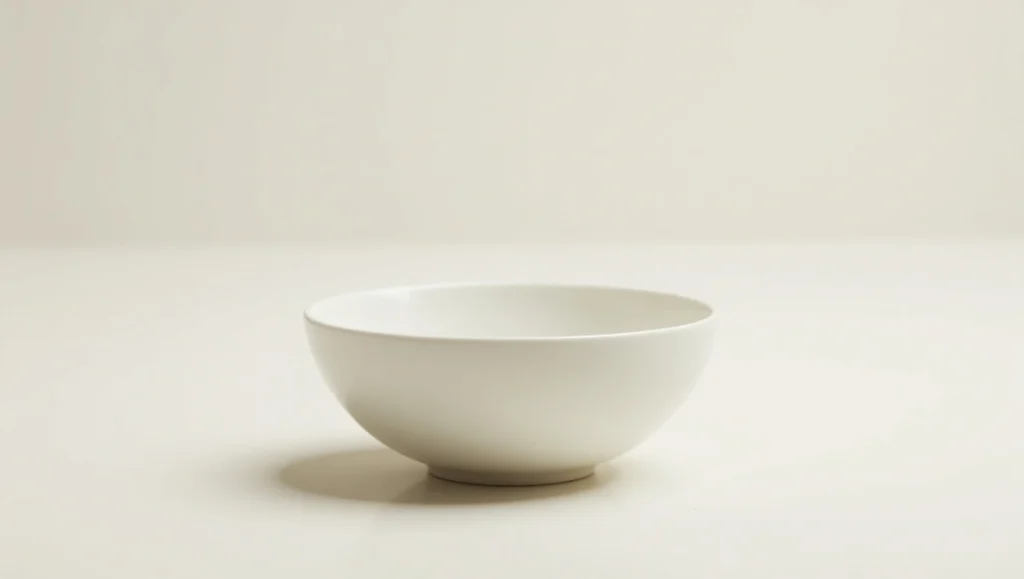
Alumina-reinforced porcelain combines traditional porcelain clay with alumina oxide crystals, creating crockery that is stronger and more chip-resistant than standard porcelain. It maintains the elegant appearance of porcelain while offering enhanced durability for high-volume hotel and restaurant operations.
Commonly used in banquets, buffets, and all-day dining outlets, alumina crockery is dishwasher and oven-safe, can withstand frequent stacking, and endures the demands of professional service. Although more expensive upfront, its longer lifespan makes it cost-effective for commercial use.
Also read: Different types of glassware used in food and beverage service
Terracotta
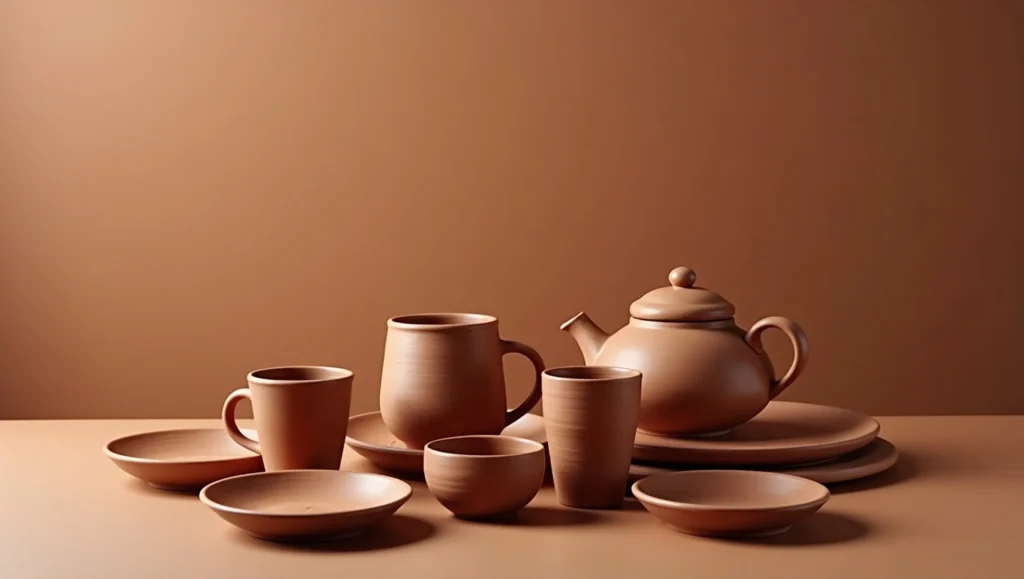
Terracotta is a type of earthenware made from coarse, natural clay, usually unglazed and fired at low temperatures. Its warm, reddish-brown colour gives a rustic, traditional look, making it popular in theme-based and regional restaurants.
Terracotta retains heat well, ideal for baked dishes, stews, and curries, and enhances food presentation. However, it is fragile, cannot go in dishwashers or microwaves, and must be handled carefully to avoid chipping. Many hotels use terracotta alongside modern crockery to combine authentic aesthetics with practicality.
Glass and Wooden Crockery – Modern Presentation Materials
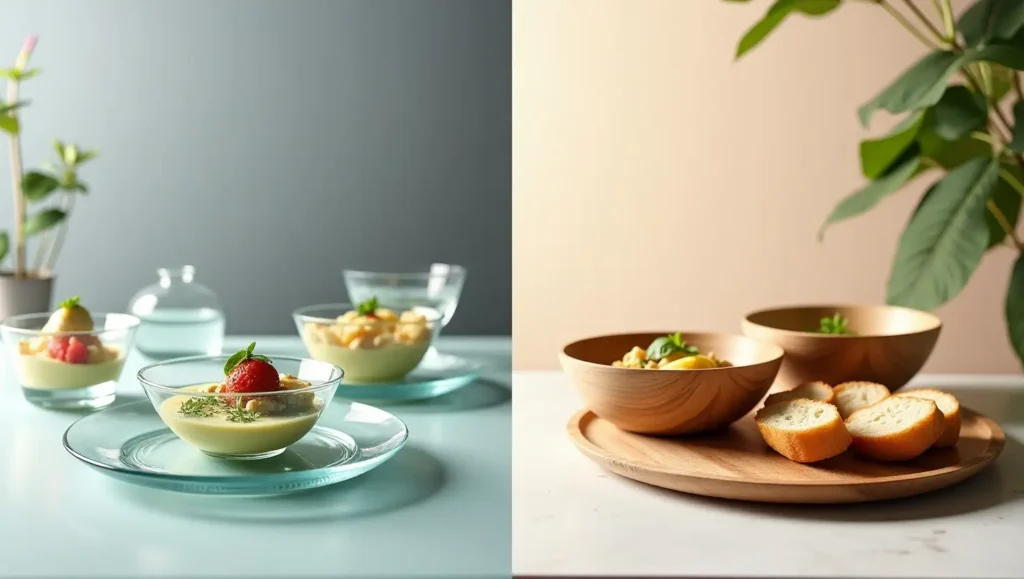
Traditionally, crockery referred only to ceramic tableware such as porcelain, stoneware, and earthenware. However, in modern food and beverage service, hotels and restaurants also use materials like glass and wood for presenting food. These items are sometimes grouped under crockery for convenience, even though technically they are not ceramics.
Glass crockery is made from silica, soda ash, and limestone, often tempered for added strength. It is smooth, non-porous, and highly hygienic, making it ideal for high-volume service. Its transparency allows chefs to showcase salads, desserts, layered dishes, and cold starters, making it especially popular in buffets, contemporary restaurants, and cafés. Glass is dishwasher safe but can break if exposed to sudden temperature changes or impacts.
Wooden crockery, usually crafted from bamboo, acacia, or teak, provides a natural, rustic aesthetic and is eco-friendly. It is commonly used for bread, cheese boards, salads, appetisers, and thematic presentations. While lightweight and antibacterial, wooden tableware cannot withstand heat, is not dishwasher safe, and requires hand-washing, immediate drying, and occasional oiling to prevent cracking. Due to these limitations, wooden crockery is more decorative and suited for speciality or thematic service rather than heavy hotel operations.
Recommended Reading: 43 essential Bar equipment and tools list and their use
Standard Crockery Items List with Size and Uses in Hotels & Restaurants
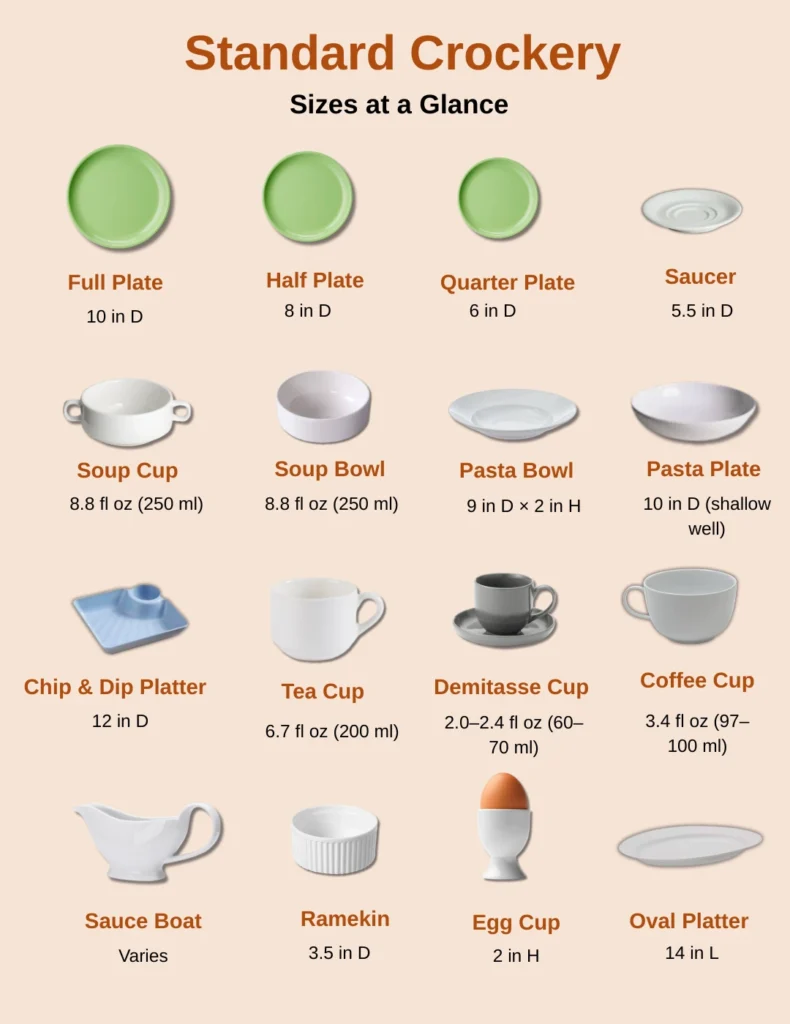
| S.No | Name | Size / Capacity (Inches) | Uses | Notes / Alternative Names |
|---|---|---|---|---|
| 1 | Quarter Plate | 6 in D | Used to serve bread, cheese, or as an underliner | Also called B&B Plate, Side Plate, Underplate |
| 2 | Half Plate | 8 in D | Used for starters, pasta, desserts, and fish | Also called Dessert Plate, Fish Plate |
| 3 | Full Plate | 10 in D | Used for main courses | Also called Dinner Plate, Joint Plate, Meat Plate |
| 4 | Soup Bowl | 8.8 fl oz (250 ml) | Used to serve soup, breakfast cereals | |
| 5 | Soup Cup | 8.8 fl oz (250 ml) | Used to serve thin soup | Also called Consommé Cup; has two handles |
| 6 | Tea Cup | 6.7 fl oz (200 ml) | Used to serve tea during the day | |
| 7 | Coffee Cup | 3.4 fl oz (97–100 ml) | Used to serve coffee after lunch or dinner | Also called Demi-Tasse |
| 8 | Cereal Bowl | 5 in D | Used for cereals, puddings, or compotes | |
| 9 | Cheese Plate | 6 in D | Used for cheese and biscuits | |
| 10 | Sauce Boat | Varies | Used to serve sauces or gravies | |
| 11 | Pasta Plate | 10 in D (shallow well) | Used for serving pasta with light sauces, risotto, and lasagna | Flat base with slight dip; common in formal dining |
| 12 | Pasta Bowl | 9 in D × 2 in H | Used for saucier pasta, noodles, gnocchi, and one-bowl meals | Deeper and more versatile; popular in casual dining |
| 13 | Steak Plate | 10–11 in D | Used for serving grilled meats | |
| 14 | Appetizer Plate | 6–7 in D | Used to serve starters or small appetisers | |
| 15 | Demitasse Cup | 2.0–2.4 fl oz (60–70 ml) | Used to serve espresso | |
| 16 | Butter Dish | Varies | Used to serve butter | |
| 17 | Sugar Bowl | Varies | Used to serve sugar | |
| 18 | Creamer | Varies | Used to serve milk or cream | |
| 19 | Fruit Bowl | 6–10 in D | Used to serve fruits | |
| 20 | Compote Dish | 5–6 in D | Used for puddings or fruit desserts | |
| 21 | Charger Plate | 12 in D | Used as an underplate in formal dining | Also called Service Plate |
| 22 | Gravy Boat Stand | 8 in D | Used as an underliner for sauce boats | Prevents drips on the tablecloth |
| 23 | Ramekin | 3.5 in D | Used for soufflés, baked dishes, and dips | Oven-proof |
| 24 | Egg Cup | 2 in H | Used to serve boiled eggs | Also called Egg Holder |
| 25 | Chip & Dip Platter | 12 in D | Used for chips, nachos, and crudités with dip | Includes a central dip bowl |
| 26 | Salt & Pepper Shakers | 3 in H | Used for seasoning at the table | Also called Pepper Pots |
| 27 | Saucer | 5.5 in D | Holds a cup, catches drips, and holds a spoon or biscuit | Also called a Tea Saucer or Coffee Saucer, it matches the corresponding cup |
| 28 | Oval Platter | 14 in L | Used for roasts, grilled fish, or shared dishes | A larger alternative to a round platter |
Fine Dining vs. Casual Dining Crockery – A Comparative Overview
The choice of crockery plays a key role in defining the dining experience, and the differences between fine dining and casual dining are both strategic and aesthetic.
Materials and Weight: Fine dining establishments typically use premium materials like porcelain and bone china. These are lightweight, smooth, and refined, projecting luxury and elegance. Casual dining, on the other hand, favours durable, cost-effective materials like stoneware or melamine, designed for high-volume service and reduced replacement costs.
Shapes and Designs: Fine dining often embraces asymmetrical, minimalist, or unique plate shapes to make the food the centrepiece of presentation. Casual dining favours playful, bold, or eclectic designs, creating a welcoming and informal atmosphere.
Colour and Finish: Classic white plates dominate fine dining, providing a clean canvas that highlights the chef’s artistry. Casual settings may use matte, earthy, or colourful plates, emphasising a modern, approachable aesthetic. Dark plates are increasingly popular in both contexts for dramatic visual contrast.
Sizing and Portion Control: Fine dining often uses smaller, intricately designed plates to communicate attention to detail and sophistication. Casual dining typically features larger plates to convey abundance and hospitality.
Conclusion
Crockery is more than just functional tableware; it is a strategic tool that shapes the dining experience and reflects a restaurant’s identity. Fine dining and casual dining differ in materials, shapes, colours, and portion presentation, each tailored to enhance the guest experience. While fine dining emphasises luxury, elegance, and artisanal craftsmanship, casual dining focuses on durability, practicality, and a welcoming atmosphere. Understanding these differences helps hospitality professionals make informed decisions, ensuring that every choice of crockery enhances both the aesthetics and functionality of food service.
Also Read
- Types of trolleys used in Gueridon service
- A la carte menu, meaning, characteristics, advantage and disadvantage
- what are the different types of breakfast in hotel
- Understanding Bar Types in Hospitality: From Lobby Lounges to Minibars
Subscribe and join our community of hospitality professionals & students — get insights, tips, and the latest updates delivered straight to your inbox!

